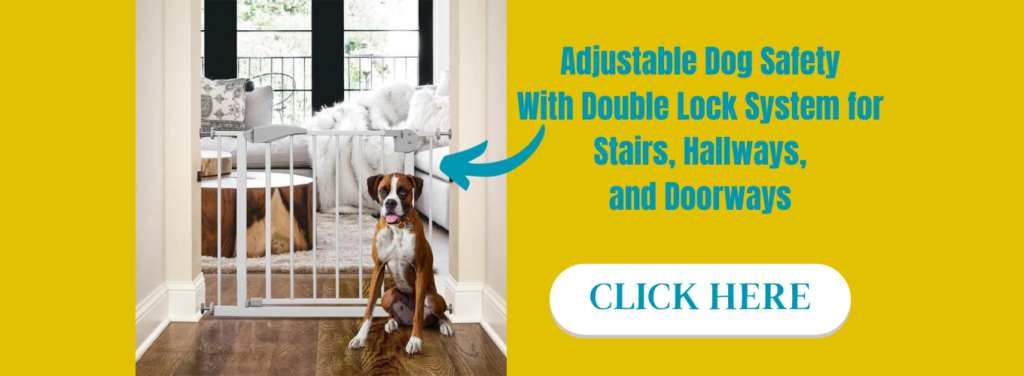
Reacting to Reactivity: Managing and Modifying Dog Reactive Behavior
Reactivity in dogs can be a challenging behavior to manage and modify. It is important to understand what dog reactive behavior is, its causes, and the signs to look out for. Once you have a good grasp of the behavior, you can then focus on managing and modifying it. This article will provide key takeaways on how to effectively manage and modify dog reactive behavior, including positive reinforcement training, desensitization and counterconditioning techniques, leash handling strategies, behavioral modification techniques, seeking professional assistance, and creating a safe environment.
Key Takeaways
- Understand what dog reactive behavior is and its causes
- Recognize the signs of dog reactive behavior
- Use positive reinforcement training to manage and modify the behavior
- Implement desensitization and counterconditioning techniques
- Practice effective leash handling techniques
Understanding Dog Reactive Behavior

What is Dog Reactive Behavior?
Reactive behavior refers to a dog’s exaggerated response towards certain stimuli, such as other dogs or unfamiliar people. It is often characterized by barking, lunging, or growling. Reactivity can stem from fear, anxiety, or a lack of socialization. Understanding the triggers that cause reactive behavior is crucial in managing and modifying it. One effective way to tackle dog reactive behavior is through positive reinforcement training, which rewards desired behavior and helps the dog associate positive experiences with the trigger. Another approach is desensitization and counterconditioning, where the dog is gradually exposed to the trigger in a controlled and positive manner. It is important to seek professional assistance when dealing with severe reactive behavior. Creating a safe environment, such as using a secure leash and muzzle, can also help prevent unwanted incidents.
Causes of Dog Reactive Behavior
Dog reactive behavior can be caused by a variety of factors. Lack of socialization during the critical period of puppyhood can contribute to the development of reactive behavior. Fear and anxiety are also common causes, as dogs may react aggressively when they feel threatened or stressed. Additionally, past negative experiences, such as traumatic incidents or abuse, can lead to reactive behavior. It is important to note that some breeds may be more prone to reactive behavior due to genetic predispositions. Understanding the underlying causes is crucial in effectively managing and modifying dog reactive behavior.
| Possible Causes |
|---|
| Lack of socialization |
| Fear and anxiety |
| Past negative experiences |
| Genetic predispositions |
Reactive behavior is a complex issue that requires patience, consistency, and professional guidance to address effectively.
Signs of Dog Reactive Behavior
Reactive behavior can manifest in various ways. Some common signs of dog reactive behavior include barking, growling, lunging, and snapping at other dogs or people. Dogs may also display stiff body language, raised hackles, and intense staring when they encounter triggers. Excessive pulling on the leash and jumping are also indicators of reactive behavior. It is important to note that these signs may vary in intensity and can be influenced by factors such as the dog’s breed, past experiences, and overall temperament. Understanding these signs is crucial in identifying and addressing dog reactive behavior.
Managing Dog Reactive Behavior
Positive Reinforcement Training
Positive reinforcement training is a highly effective method for managing and modifying dog reactive behavior. By rewarding desired behaviors with treats, praise, or play, dogs learn to associate positive experiences with calm and non-reactive behavior. This approach helps build trust and confidence in dogs, enabling them to make better choices in challenging situations. It is important to consistently reinforce positive behaviors and avoid punishing or scolding reactive behavior. Consistency and patience are key when implementing positive reinforcement training. Here is an example of a simple training plan:
| Command | Action |
|---|---|
| Sit | Dog sits and gets a treat |
| Stay | Dog stays in place for a few seconds and gets a treat |
Remember, every dog is unique, so it is essential to tailor the training plan to your dog’s specific needs and abilities.
Desensitization and Counterconditioning
Desensitization and counterconditioning are two effective techniques used to modify dog reactive behavior. Desensitization involves gradually exposing the dog to the trigger that causes the reactive behavior, starting at a low intensity and gradually increasing it over time. This helps the dog become less sensitive to the trigger and reduces the reactive response. Counterconditioning, on the other hand, focuses on changing the dog’s emotional response to the trigger by associating it with something positive. This can be done by rewarding the dog with treats or praise when they exhibit calm behavior in the presence of the trigger. It is important to note that these techniques require patience, consistency, and professional guidance for best results. A table summarizing the steps involved in desensitization and counterconditioning can be found below:

| Steps for Desensitization and Counterconditioning |
|---|
| 1. Identify the trigger that causes the reactive behavior |
| 2. Start with a low-intensity version of the trigger |
| 3. Gradually increase the intensity of the trigger |
| 4. Reward calm behavior in the presence of the trigger |
| 5. Repeat the process until the dog’s reactive behavior is reduced |
Here are some additional tips for successful desensitization and counterconditioning:
- Patience: The process can take time, so it’s important to be patient and not rush the dog.
- Consistency: Consistency is key in reinforcing positive behavior and creating lasting change.
- Professional Guidance: Working with a professional dog trainer or behaviorist can provide valuable guidance and support throughout the process.
Remember, every dog is unique, and what works for one may not work for another. It’s important to tailor the techniques to suit the individual dog’s needs and to prioritize their safety and well-being.
Leash Handling Techniques
Leash handling techniques are an essential part of managing dog reactive behavior. It is important to use a short leash to maintain control and prevent the dog from lunging or pulling. Gentle pressure and release techniques can be used to communicate with the dog and guide their movements. Additionally, positive reinforcement should be used to reward calm and appropriate behavior. It is crucial to avoid tense and jerky movements that may escalate the dog’s reactivity. Remember, patience and consistency are key when working on leash handling techniques.
Here is an example of a leash handling technique using a table:
| Technique | Description |
|---|---|
| Loose Leash Walking | Teaching the dog to walk calmly on a loose leash, rewarding them for staying by your side. |
Remember, always consult a professional dog trainer or behaviorist for personalized guidance.
Modifying Dog Reactive Behavior

Behavioral Modification Techniques
When it comes to modifying dog reactive behavior, there are several techniques that can be effective. Counterconditioning is a common approach that involves pairing the presence of the trigger with something positive, such as treats or play. This helps to create a positive association and reduce the dog’s reactivity. Desensitization is another technique that involves gradually exposing the dog to the trigger at a low intensity and gradually increasing the intensity over time. This helps the dog become more comfortable and less reactive. Additionally, reward-based training can be used to reinforce desired behaviors and redirect the dog’s attention away from triggers. It is important to remember that modifying dog reactive behavior takes time and patience, and it is recommended to seek professional assistance for guidance and support. Creating a safe environment for the dog is also crucial, ensuring that they have a secure space where they feel comfortable and can avoid triggers. Overall, a combination of these techniques can help in managing and modifying dog reactive behavior.
Professional Assistance
When dealing with dog reactive behavior, seeking professional assistance can be beneficial. Certified dog trainers and animal behaviorists have the knowledge and experience to assess the behavior, identify the underlying causes, and develop a customized training plan. They can provide guidance on positive reinforcement techniques, desensitization and counterconditioning, and leash handling. Additionally, they can offer support and advice throughout the process. It is important to remember that modifying dog reactive behavior takes time and patience, and having the expertise of professionals can greatly enhance the effectiveness of the training. Working with a professional can give you the confidence and tools necessary to help your dog overcome their reactive behavior and create a harmonious environment for both you and your pet.
| Professional Assistance |
|---|
| – Certified dog trainers |
| – Animal behaviorists |
| – Customized training plan |
| – Positive reinforcement techniques |
| – Desensitization and counterconditioning |
| – Leash handling |
Creating a Safe Environment
In order to create a safe environment for a dog with reactive behavior, it is important to remove triggers that may cause the dog to react. This can include avoiding areas with high dog traffic, keeping the dog on a leash or in a secure fenced area, and providing a quiet and calm space for the dog to retreat to when feeling overwhelmed. Additionally, it is important to establish a routine for the dog, as predictability can help reduce anxiety. Providing mental and physical stimulation through interactive toys and regular exercise can also help redirect the dog’s focus and energy. Lastly, ensuring the dog’s safety by using appropriate equipment, such as a sturdy leash and harness, is essential. Creating a safe environment requires a combination of management, prevention, and providing the dog with a sense of security and comfort.
Frequently Asked Questions

What is dog reactive behavior?
Dog reactive behavior refers to a dog’s tendency to display aggressive or fearful behavior towards other dogs or specific triggers.
What causes dog reactive behavior?
Dog reactive behavior can be caused by a variety of factors, including fear, lack of socialization, past negative experiences, or genetic predisposition.
How can I recognize dog reactive behavior?
Signs of dog reactive behavior may include barking, lunging, growling, or pulling on the leash when encountering other dogs or triggers.
What is positive reinforcement training?
Positive reinforcement training is a training method that rewards desired behaviors with treats, praise, or other rewards, to encourage the dog to repeat those behaviors.
What is desensitization and counterconditioning?
Desensitization and counterconditioning are techniques used to gradually expose a dog to their triggers in a controlled and positive way, with the aim of reducing their reactive response.
How can I handle my dog’s reactivity on a leash?
Leash handling techniques, such as maintaining a loose leash, using a front-clip harness, or practicing walking exercises, can help manage a dog’s reactivity on a leash.

